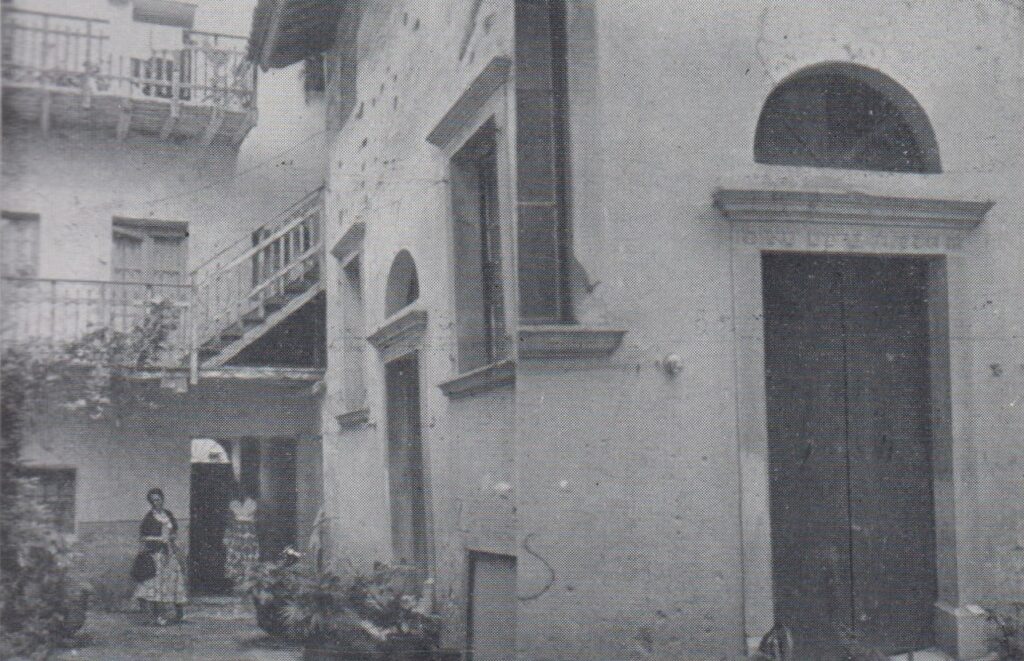Learn More

The first documents referring to a Jewish presence in San Daniele date back to the sixteenth century, including one from 1547, a pact between the local authorities and the Jewish moneylender Simon de Mantua, which outlines obligations, prohibitions and permissions.
Jews enjoyed better rights here compared to the Republic of Venice. Here they had rights of residency, as well as permission to conduct commercial or moneylending activities. There was never a ghetto here, though Jews did tend to live in the same areas, especially concentrated around the Piazza Cattaneo.
Despite the prohibitions sanctioned by the Lateran Council in 1215 and by the infamous Papal Bulls of the 1500s, here Jews faced no restrictions on their work activities for a long period of time. They therefore contributed to the development of trade, the production of silk, cereals and other products. At the time there were fewer than seventy people in the Jewish Community.
In 1687 Isacco, son of the banker Raffaele Luzzatto, was the first Friulian Jew to graduate in Medicine from the University of Padua.
There was a Synagogue in San Daniele from the eighteenth century, which was used by the Jewish Community until the early twentieth century.
In 1777, when the area rejoined the Republic of Venice, the Jews received orders to leave places where there was no ghetto, including San Daniele. Many found refuge in in nearby cities, such as Gorizia, Gradisca and Trieste.
Throughout the 1800s, the Jewish Community was mainly formed of branches of the Gentili family, who managed shops, a bar, and traded in grain, animals, wines and silkworms. In 1899 there were thirty Jews.
During the years of the First World War, the Synagogue was vandalised.
In 1930, with the Falco Law, the Jewish Communities of Udine and San Daniele ended up under the jurisdiction of that of Gorizia.
On 16 June 1944, nine members of the Szörényi family, originally from Fiume/Rijeka, were deported from San Daniele. Only one of the daughters, Arianna, survived. Arianna was 11 when she was arrested, and her brother Dino was just over twenty. In 2023 Stumbling Stones were installed in memory of this family, at 64 Via Piave, where they had moved in 1943 in the hope of finding safety.
After the Second World War, the Community ceased to exist and the sacred furnishings of the Synagogue were moved to the “Umberto Nahon” Museum of Italian Jewish Art in Jerusalem. The building was finally demolished in 1969.
The first Jewish surnames recorded at San Daniele are: Nantua (perhaps from Nantua in France) and Luzzatto. From the 1600s we also find Gentilli, Lolli, Caprileis, Sullam and Caravaglio.
Among the Luzzattos, there were important doctors, scholars, rabbis… including Isacco, Nathan, Rabbi Anselmo, the medical brothers Efraim and Isacco.
The family of the illustrious Triestine Hebraist Samuel David Luzzatto (ShaDaL) was also originally from San Daniele.
SOURCES:
Text by Dr Isanna Bonoris and Gloria Pilastro
Federico Luzzatto, Cronache storiche della Università degli ebrei di San Daniele del Friuli. Cenni sulla storia degli Ebrei del Friuli, “La Rassegna Mensile di Israel”, Rome 1964
Valerio Marchi, Gli ebrei a San Daniele del Friuli, in P. C. Ioly Zorattini, M. Perani, A. Spagnuolo (eds), I cimiteri ebraici del Friuli. Cividale, Udine, San Daniele, San Vito al Tagliamento, Giuntina, Florence 2018, pp. 53-58
Lara Pironio, L‘insediamento ebraico di San Daniele del Friuli nel Settecento, in “La Rassegna Mensile di Israel”, 3rd edn, Vol. 65, No. 2 (Maggio – Agosto 1999), pp. 31-80
Arianna Szörényi, Una bambina ad Auschwitz, (ed. by) Mario Bernardi, Mursia, Milan 2014
Text by Isanna Bonoris
Translation from Italian to English by Bethany Gaunt
Project by
Jewish Community of Trieste and Ca’ Foscari University Venezia
Info
visit@triestebraica.it
